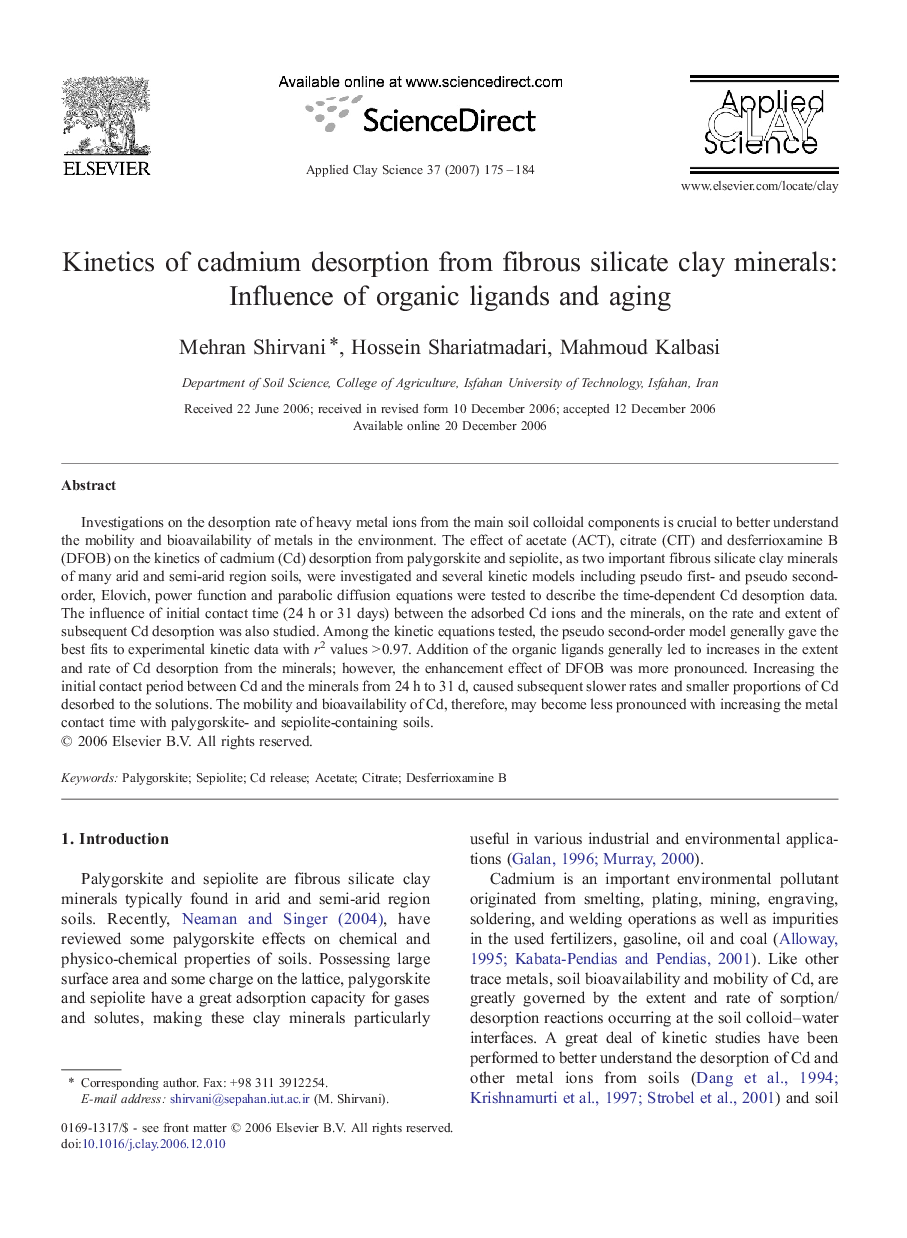| Article ID | Journal | Published Year | Pages | File Type |
|---|---|---|---|---|
| 1696566 | Applied Clay Science | 2007 | 10 Pages |
Investigations on the desorption rate of heavy metal ions from the main soil colloidal components is crucial to better understand the mobility and bioavailability of metals in the environment. The effect of acetate (ACT), citrate (CIT) and desferrioxamine B (DFOB) on the kinetics of cadmium (Cd) desorption from palygorskite and sepiolite, as two important fibrous silicate clay minerals of many arid and semi-arid region soils, were investigated and several kinetic models including pseudo first- and pseudo second-order, Elovich, power function and parabolic diffusion equations were tested to describe the time-dependent Cd desorption data. The influence of initial contact time (24 h or 31 days) between the adsorbed Cd ions and the minerals, on the rate and extent of subsequent Cd desorption was also studied. Among the kinetic equations tested, the pseudo second-order model generally gave the best fits to experimental kinetic data with r2 values > 0.97. Addition of the organic ligands generally led to increases in the extent and rate of Cd desorption from the minerals; however, the enhancement effect of DFOB was more pronounced. Increasing the initial contact period between Cd and the minerals from 24 h to 31 d, caused subsequent slower rates and smaller proportions of Cd desorbed to the solutions. The mobility and bioavailability of Cd, therefore, may become less pronounced with increasing the metal contact time with palygorskite- and sepiolite-containing soils.
